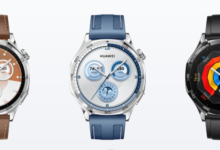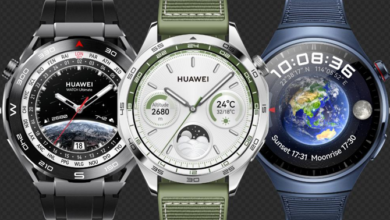Why Are Folding Phone Hinges So Complex?

Folding phone hinges represent a brilliant confluence of cutting-edge design and precision engineering. Their complexity lies in the necessity to ensure functionality and longevity while supporting a versatile form factor. Engineers and designers invest tremendous effort in creating hinges that allow screens to flex and fold without damage. The intricacies involved in achieving this feat are a result of the need to balance technological innovation with practical requirements. This exploration reveals why crafting folding phone hinges is a significant engineering challenge.
Multifunctional Demands on Hinge Design
Balancing Flexibility with Structural Integrity
Designing folding phone hinges requires a fine balance between flexibility and strength. Engineers must create a hinge that allows smooth movement without compromising the device’s durability. Materials need to withstand the stress of constant folding and unfolding, requiring an innovative approach to material science. The goal is to ensure that the device maintains its structural integrity, which is essential for everyday use. This balance is crucial to the hinge’s performance and longevity.
Accommodating Diverse Folding Patterns
Modern folding phones offer various folding modes, such as book-like folds or clamshell designs. Each pattern demands a unique hinge mechanism tailored to its specific movement and stress points. Designing for these patterns requires an understanding of mechanical dynamics and user interaction. Engineers analyze the forces exerted during different folding actions and adjust the hinge design accordingly. This diversity in folding patterns adds to the complexity of designing adaptable and durable hinges.
Ensuring Seamless User Experience Across Modes
A primary focus in hinge design is providing a seamless experience regardless of the mode the phone is in. Users expect smooth transitions without noticing mechanical interruptions. Engineers achieve this by ensuring hinges operate quietly and smoothly. This involves meticulously engineering the components to reduce noise and resistance during movement. A seamless user experience is essential for user satisfaction and is achieved through precise engineering and design refinement.
See also: How is the USA leveraging technology for environmental sustainability?
Engineering Challenges in Hinge Mechanisms
Precision Engineering and Microscopic Tolerances
Hinge mechanisms demand precision engineering down to microscopic tolerances to function effectively. Even minor deviations can result in mechanical issues or reduce the lifespan of the device. Engineers utilize advanced manufacturing techniques to achieve the necessary precision, ensuring each component fits perfectly. This meticulous attention to detail is crucial to preventing malfunctions. Achieving such precision requires sophisticated tools and a deep understanding of material behaviors on a microscopic level.
Integrating Multiple Components in a Limited Space
Folding phone hinges must incorporate numerous components within a restricted space. Integration of parts like gears, springs, and housings must be compact yet functional. This space constraint challenges engineers to innovate, often opting for miniaturized components without sacrificing performance. The limited space makes the design process even more intricate as every millimeter counts. Success in this area results in sleek designs that still offer robust performance.
Managing Wear and Tear Over Time
Wear and tear are inevitable due to the repetitive motion that folding phones endure. Engineers design hinges to withstand thousands of folds while maintaining functionality. They use durable materials and test extensively to predict lifespan and wear patterns. Understanding wear dynamics allows for the introduction of features that minimize degradation. Effective management of wear ensures that folding phones maintain their integrity and provides users with a reliable device over time.
Innovations Driving Hinge Complexity
Advanced Materials and Manufacturing Techniques
Innovations in materials and manufacturing have significantly influenced hinge complexity. Engineers now utilize advanced alloys and polymers to enhance durability and flexibility. Modern manufacturing techniques, like precision cutting and 3D printing, allow for designs that were previously impossible. These advancements enable the creation of hinges that are both lightweight and highly resilient. The involvement of cutting-edge materials and techniques is pivotal in producing durable and efficient folding phone hinges.
Incorporation of Smart Features and Sensors
Modern hinges often incorporate smart features and sensors to enhance user interaction. These elements provide data on hinge activity, aiding in seamless transitions between modes. Engineers face the challenge of integrating these technologies without compromising the hinge’s size or function. This task requires intricate circuitry and a keen eye for design minimization. Incorporating smart features moves beyond mere mechanics, adding layers of complexity in design and manufacturing.

Adaptation to Emerging Form Factors
Emerging form factors continually push the boundaries of hinge design. Each new design requires a rethinking of hinge mechanisms to fit its unique needs. Engineers must innovate swiftly to keep up with market trends and consumer expectations. This requires flexibility in design thinking and the application of cutting-edge technologies. Adapting to these new challenges ensures the continual evolution and improvement of folding phone hinges.
Conclusion
Folding phone hinges are marvels of modern engineering, embodying a mix of complexities drawn from structural and technological requirements. The multifaceted demands and challenges presented in designing these hinges are addressed using innovative materials, advanced engineering, and sophisticated technology. As technology evolves and consumer expectations grow, hinge designs—like that of the HONOR Magic V5—will continue to become more intricate while striving for seamless user experiences. Understanding these complexities helps us appreciate the remarkable feats achieved in the world of folding technology and design innovation.







